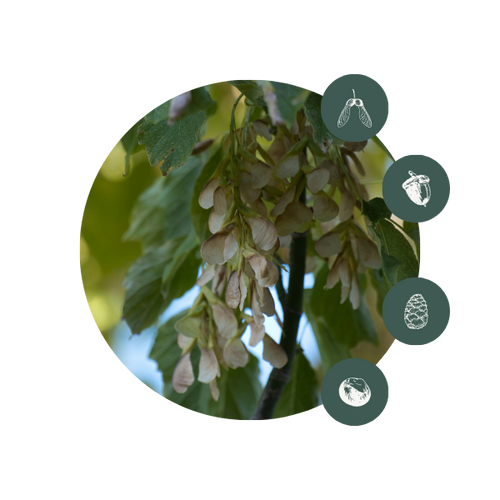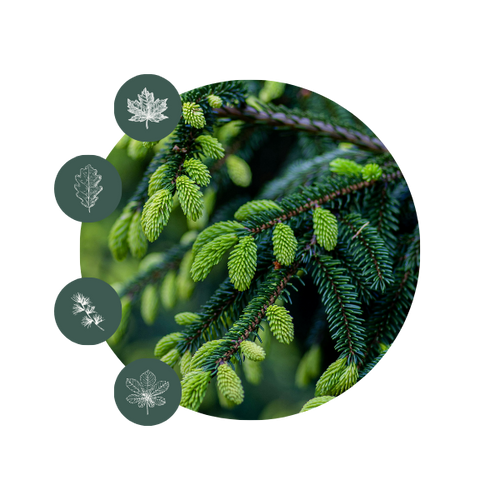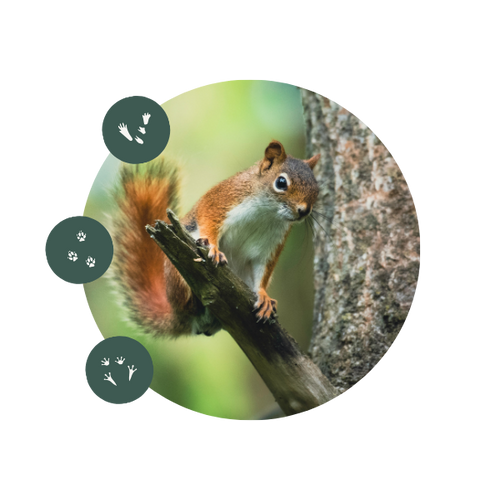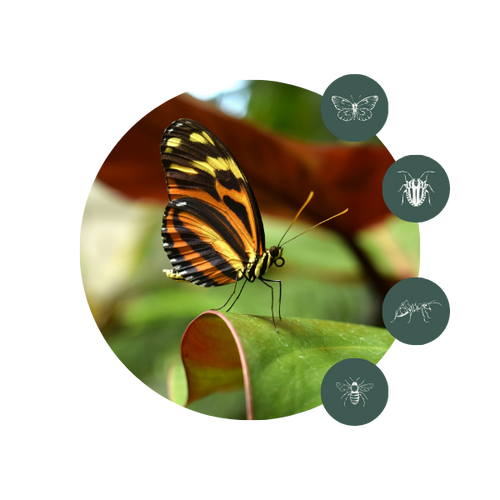SUPPORT THE NATIVE FOREST ECOSYSTEMS
Forest (n.) - Mother Nature's coolest party, where plants, animals, and microorganisms mingle and groove, creating a biodiversity boogie!
BUY NOWDiscover our ecosystem
Support a local tree planting project

Inspired by Swiss forests
1 PRODUCT = 1 TREE
From A-Z from our forest: the production process
NIKIN has a love of nature at its heart. As a Swiss brand, it is particularly important to us to protect local ecosystems and bring them closer to a broad community. With this in mind, we are particularly proud to present the TreeShirt Forest Ecosystem.
The T-shirt is a tribute to the diversity of Swiss forests and contributes directly to the preservation of local ecosystems. It is inspired by the Swiss forest from start to finish - for the print and material inspiration, our product team went into the forest with a forester and for the positive impact on the Swiss forest, every TreeShirt Forest Ecosystem sold plants a Tree in Aargau. Find out more about the production process of the TreeShirt, the biodiversity of Swiss forests and our Swiss tree planting project.
Discover our Swiss tree planting project
TreeShirt Forest Ecosystem
Inspired by Swiss forests, designed for the preservation of Swiss ecosystems. The TreeShirt Forest Ecosystem is all about the local forests. The large back print highlights important organisms in Swiss forest ecosystems, and for every copy sold, a Tree is planted in Switzerland. The new 140g/m² fabric made from 85% organic cotton and 15% stinging nettle gives the shirt a characteristic touch and ensures a particularly long service life.
BUY NOW
Because the forest is not just made up of trees
The biodiversity of Swiss forests
Biodiversity refers to the diversity of habitats and species and their interaction within these biological spaces.
These 5 aspects are particularly important in the area of biodiversity in Swiss forests:
The biodiversity of Swiss forests
Biodiversity refers to the diversity of habitats and species, as well as their interaction within these biological spaces.
These 5 aspects are particularly important in the area of biodiversity in Swiss forests:
Tree planting project
With our Forest Collection, we are also supporting the Swiss forest: for every TreeShirt sold, we donate a Tree worth 2.90 Swiss francs to the Rietenberg forestry operation. Unfortunately, many conifers on the Rietenberg (AG) have fallen victim to the bark beetle and died. Work will now begin in April 2024 and the area will be replanted to rebuild the important forest ecosystem, which provides the basis of life for numerous animals and plants.























